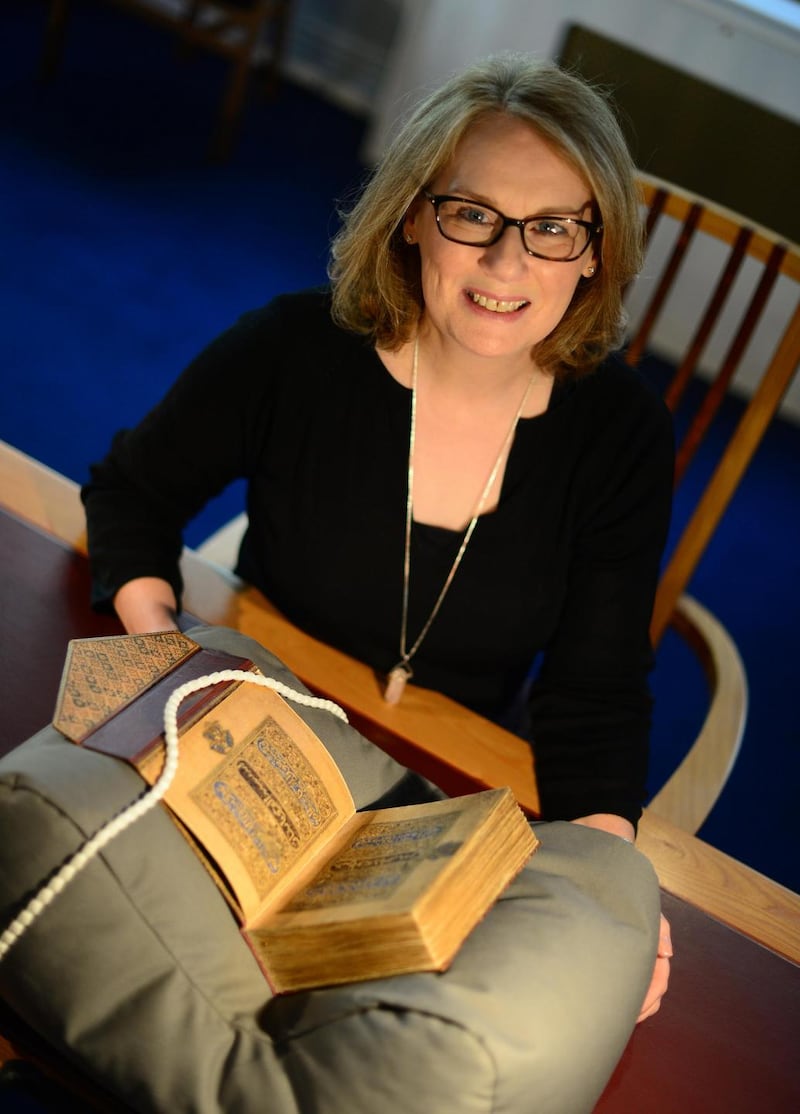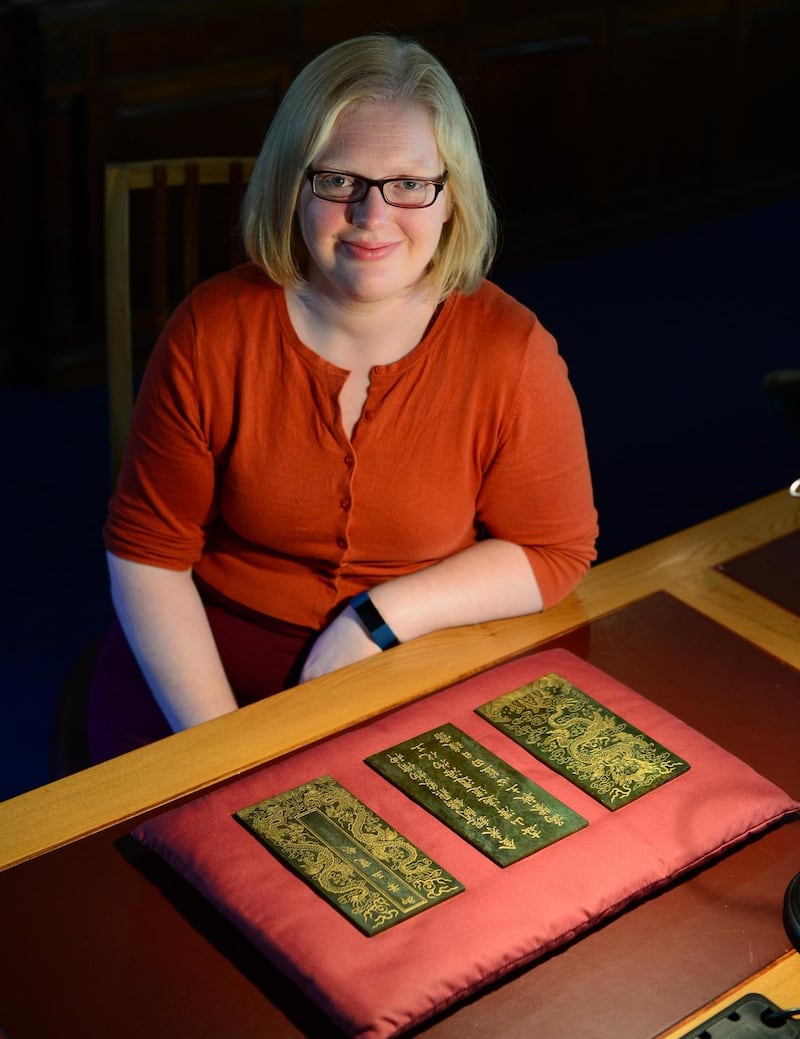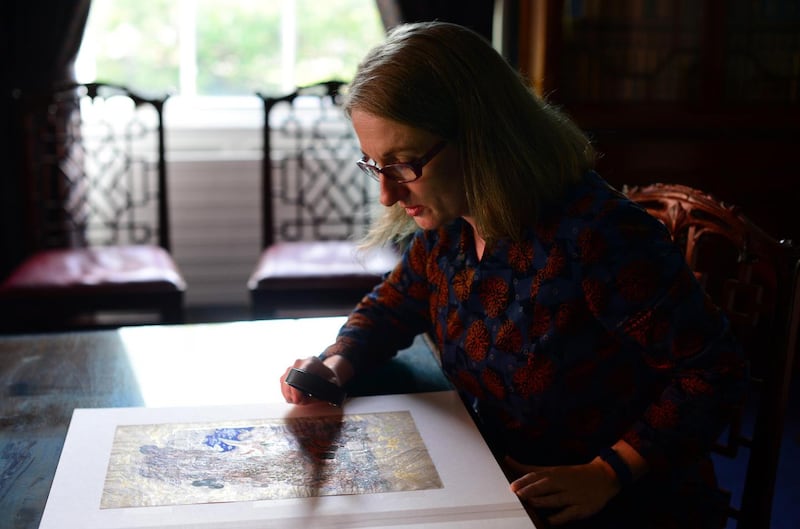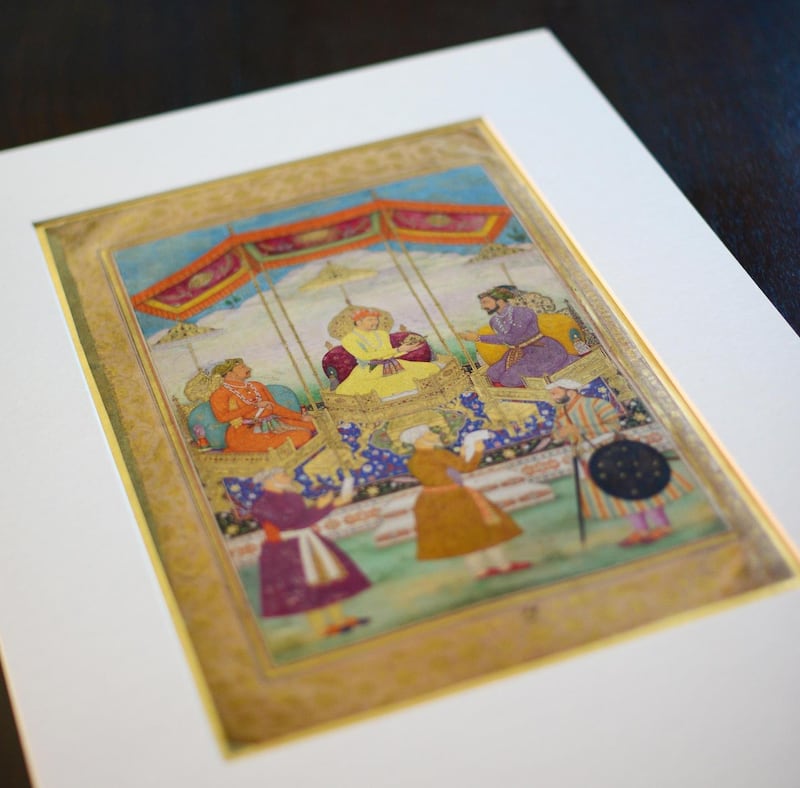I have my hands behind my back in the reference section of the Chester Beatty Library, a pen in one of them. I am terrified that I will topple over and fall on the priceless 1,000-year-old illuminated Koran on the table in front of me. Even though my pen is firmly closed, I am picturing a scenario where it explodes black ink all over these open pages, which are usually displayed safely behind glass.
These things do not happen, I am relieved to report. I do not damage or destroy any of the rare and precious objects that will be featuring in the library's newest exhibition, Gift of a Lifetime: Treasures from Chester Beatty's Collection. This year marks the 50th anniversary of the mining magnate and philanthropist's extraordinary bequest to the State: about 20,000 manuscripts, paintings, objects, scrolls, textiles, woodblocks and books.
The library, whose home is in the grounds of Dublin Castle, is keen to point out that 28 of its 44 staff are women, including several of the curators, and those who put this exhibition together. Julia Poirier is a book conservator, and it is she who is so carefully turning the pages of this Koran that I fear I will somehow destroy.
The Koran is out for me to see because it is a personal favourite of Fionnuala Croke, the library's director. She and four of the other women who work at the library have each chosen a piece for the exhibition, so they can explain why each of them is important.

Why has Croke chosen this manuscript? "We have 270 Korans, and many of them are much larger and more elaborately illuminated than this one. I call it a discreet treasure," she says. "It was both copied and illuminated by one of the great Islamic calligraphers, Ibn al-Bawwab, in Baghdad between 1000 and 1001. It sings as you turn the pages."
Each of the pieces in the exhibition has been selected to showcase the range and quality of the collection. “It’s the creme de la creme. Quality and rarity were the hallmarks of what Chester Beatty acquired. Each of the works selected could be justly regarded as a world-renowned piece. But do the public realise that we only show between 1 and 1.5 per cent of the collection at any one time?”
Mary Redfern is the library's curator of east Asian collections. The pieces that are her favourite in the exhibition are three folios from a book made of nephrite jade. Three pieces of carved jade in a green so dark it looks almost black lie on a cushion in front of us. The carved pieces date from 1745; almost 300 years later, jade remains the most prized and expensive of all materials in China, and carries enormous cultural significance.
I feel I should sit on my hands, in case they are somehow commanded by a black spell to move towards these museum pieces
“Instead of using silk or parchment to write on, they wrote on jade,” Redfern explains. The text is a poem by Qianlong, the fourth emperor of China’s Qing dynasty, about a beautiful jade bowl he possessed. Take a moment to consider an era when a poem was immortalised in jade, at incalculable expense.
Craftsmen carved the emperor’s handwriting into the jade, and decorated the “covers” with images from the poem; one of the pieces I see is a magnificent sea-monster dragon. All the etched words and images were then picked out in gold; gold that still shines brightly. “Our conservation challenge is the fragility of the piece,” she says. I feel I should sit on my hands, in case they are somehow commanded by a black spell to move towards these museum pieces. Should the jade fall to the floor it would crack neatly in half – or perhaps more than two pieces – like a broken slate.
So is the poem any good? “It’s wonderful,” Redfern says. She has a translation to give me. And, actually, it is quite marvellous. The emperor is celebrating, in words carved on jade, a jade bowl he owns. “The influence of king-sages reached mountain and marsh, but the monsters of the sea were left. The sages conformed to creative nature, their virtue pierced to the heart of the earth. The mountains of Lan T’ien bared their bones in the sun’s heat . . . All the monsters of the deep are here. Coral and tortoiseshell and mermaids’ pearl tears.”


What comes next is the pick of Felicia Tan, library registrar. It's a tall, narrow book with Chinese calligraphy. If it's astonishing to consider a book carved into jade, it's even more incredible to meditate on the scale of the project of which this book is a part of.
"This was like Google for the 16th century," Tan says. It is the correct analogy to make, because this book was one of 11,095 volumes commissioned in the 16th century; each one was on a different topic. The Chinese emperors had vision and ambition and the means to carry out their extraordinary ideas. Yongle, the third emperor of the Ming dynasty, wanted an encyclopaedia that would have information about everything in the world. Thus he commissioned these thousands of books, which more than 2,000 scholars worked on. The topics range from bamboo to divination, painting, agriculture and science – a project on a staggering scale.
"It was the sum total of knowledge in China," Tan says. Until the 18th century there were no copies of this fantastical series of books. None of the original 11,095 books survives, but there are 400 volumes of 18th-century copies. The Chester Beatty Library has three, one of which, on the subject of paper, is on the table beside us. What Tan loves about this book is the "scope of the project" it represents. "These objects have such history behind them."
The page is beautiful and bright. The 400-year-old orange and yellow and blue still look fresh; a mountain made of flames, a mythical bird, a sky like an ocean
Moya Carey and Jessica Baldwin have chosen illuminated folios as their favourites from the exhibition. Carey is curator of Islamic collections; Baldwin is head of collections and conservation.
Carey gives me a magnifying glass, so I can more closely examine her 16th-century Iranian illumination. It is a page from an illustrated book of poetry, The Book of Kings, an Iranian national epic. It's beautiful and bright. The 400-year-old orange and yellow and blue still look fresh; a mountain made of flames, a mythical bird, a sky like an ocean. As for the clouds, there is only one word for them, psychedelic, "buzzing with movement and colour", as Carey puts it.
“Look,” she says, directing my gaze with the magnifying glass. “There are things hidden for you to find.” I see tiny faces in a rock. Cherries. More tiny faces. “The patrons who commissioned this work were demanding, and always looking for extra detail.” She draws my attention to the smallness of the script. “You are meant to be reading it very closely, and looking at everything very carefully.”


The Chester Beatty has 16 pages of this glorious illuminated manuscript. At some point it became common that books of this quality were split up and their pages sold individually. Two pages, including this one, will be on display in the exhibition.
Baldwin has also chosen a page from an album. Her pick dates from the 17th century and is an Indian Mogul painting from what’s known as the Minto Album.
"I chose this piece because it comes from an album we share ownership on with the Victoria and Albert Museum," in London, she says. When the album was sold by Sotheby's in London in the 1920s, it was split and jointly purchased by the two museums.
Baldwin points out the exquisitely detailed brushwork. “They would have used squirrel-hair brushes,” she says. “You can even see the individual stroke of each whisker in the beards.” And so you can. There is a particular conservation challenge with the pages from this album. “The thick application of the pigment, and the fact the pages were originally designed to be turned, means that the pigment can crack and flake.”
Three pages from the Minto Album are going into the exhibition. The page on the table in front of us depicts real people, the emperors Akbar, Jahangir and Shah Jahan, each seated on a throne. The album was commissioned by Emperor Jahangir. It was Shah Jahan who built the Taj Mahal for his late wife, so in a way this illustration is a 17th-century version of a page from Hello! featuring royalty and wealthy celebrities. They didn't have Instagram back then, but the wealthy did have the means to immortalise their likeness in golden pigments.
Gift of a Lifetime: Treasures from Chester Beatty's Collection is at the Chester Beatty Library, at Dublin Castle, from Friday, October 19th, 2018, until Sunday, April 28th, 2019





















